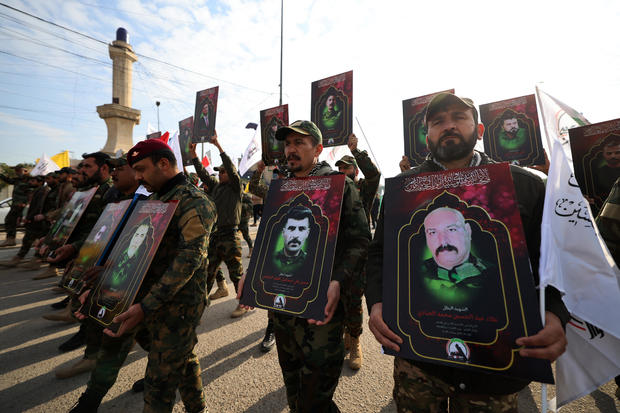An Iran-backed militia group in Iraq asserted responsibility
for a drone assault on a base in eastern Syria utilized by U.S. troops,
resulting in the demise of six American-allied Kurdish fighters. This attack,
while causing no American casualties, signifies the first notable reaction from
what the U.S. terms as Iran's proxy groups to recent U.S. airstrikes targeting
these militias in the region.
Following intensified attacks on U.S. bases by groups under
the umbrella of the Islamic Resistance in Iraq, the U.S. initiated strikes
against them in both Iraq and Syria. These actions were prompted by a deadly
drone strike on a base in Jordan, which claimed the lives of three U.S. service
members on Jan. 28.
The Kurdish-led Syrian Democratic Forces disclosed that a
drone struck a training ground at the al-Omar base in Syria's Deir el-Zour
province. This base is utilized for training commandos by the SDF, with a
contingent of approximately 900 U.S. troops stationed there as part of the
ongoing mission against ISIS.
The Islamic Resistance in Iraq released a video taking
responsibility for the attack, showcasing purported images of the drone's
launch from an unspecified location.
The U.S. retaliatory strikes in Iraq, Syria, and Yemen
signify an ongoing response to Iran's affiliates across a broad geographical
expanse. Groups aligned with Iran assert their attacks on U.S. and Israeli
interests in solidarity with Palestinians amid the conflict between Israel and Hamas
in Gaza.
In Yemen, U.S. and U.K. forces targeted Houthi missile
launch and radar systems, responding to threats against ships in the Red Sea.
The Houthis, backed by Iran, have repeatedly expressed hostility towards the
U.S. and Israel.
Despite Iran's denial of involvement in the escalating
violence, the U.S. remains committed to retaliating against groups posing
threats to American interests. With tensions high and numerous potential
flashpoints, maintaining a delicate balance is crucial in preventing further
escalation in the volatile region.









.jpg)